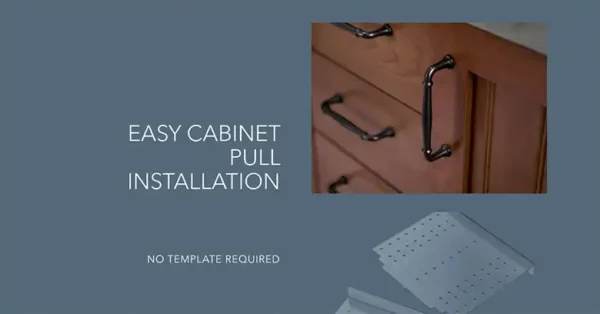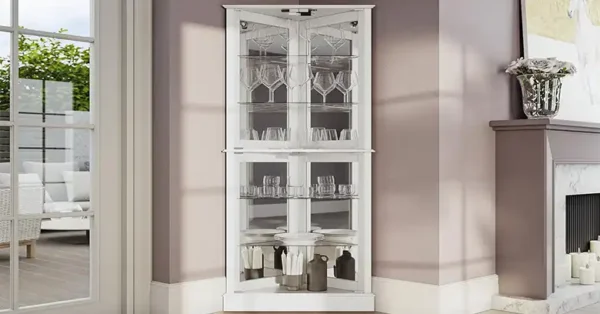Creating an eco-friendly kitchen is one of the most impactful home improvements you can make—both for the planet and for your household budget and health. Kitchens are resource-intensive rooms: they use a lot of water and energy, house appliances that consume electricity constantly, and often contain materials with hidden environmental and health costs. But with thoughtful planning and intentional choices, you can design a kitchen that looks great, functions beautifully, and reduces waste, energy use, and toxic exposure.
This guide is a detailed, practical, start-to-finish roadmap for an eco-friendly kitchen renovation. It covers planning, materials, appliances, water and waste systems, finishes, budgeting, sourcing, and maintenance—plus checklists, timelines, and realistic trade-offs so you can make smart green choices that match your priorities and budget.
Why an Eco-Friendly Kitchen Matters
Renovating toward sustainability matters for several reasons:
- Environmental impact: Kitchens consume significant energy and water; choosing efficient systems reduces greenhouse gases and resource depletion.
- Health: Low-VOC finishes, non-toxic cabinetry, and responsibly sourced materials improve indoor air quality and reduce long-term health risks.
- Cost savings: Energy- and water-efficient fixtures reduce utility bills. Durable materials reduce replacement needs and long-term costs.
- Waste reduction: Reuse, recycling, and composting cut landfill contribution.
- Resale value: Increasingly, buyers value sustainable homes and are willing to pay for energy-efficient upgrades.
An eco-friendly kitchen is not about perfection—it’s about moving the needle in the right direction with practical, lasting choices.
Big-picture Planning: Start With Purpose
Before you pick finishes or order appliances, do a short planning exercise:
- Set goals. Examples: reduce energy use 30%, add composting, avoid all PVC-based cabinetry, or use 50% recycled materials.
- Assess the existing space. Note natural light, plumbing and electrical layout, condition of cabinets and floors, and where waste currently collects.
- Decide scope. Full gut-renovation, partial refresh (appliances and finishes), or convert existing features (e.g., add water-saving fixtures and replace countertops only).
- Budget bracket. Set a realistic total and allocate percentages: 30–40% appliances/MEP, 20–35% cabinetry, 10–20% countertops/finish materials, 5–10% lighting/plumbing, remainder for labor, contingency, and design fees.
- Timeline. A full remodel typically runs 6–10 weeks for a typical kitchen; partial projects are shorter. Build in contingency for backordered sustainable materials.
- Prioritize. If budget is limited, prioritize mechanical efficiencies (appliances, ventilation, lighting) before cosmetic features—they return ongoing savings.
A short sustainability audit helps you identify the highest-impact changes: leaky faucets? Old refrigerator that drains energy? Cabinets in good condition that only need refacing? Prioritize interventions that save resources and money first.
Design Principles for a Sustainable Kitchen
Apply these guiding principles throughout the renovation:
- Minimize waste. Repair and reuse where possible. Salvage cabinetry or refinish floors instead of replacing.
- Right-size. Buy appliances and fixtures that fit your actual needs—oversized equipment wastes resources.
- Choose durable over trendy. Long-lasting materials reduce replacement and landfill waste.
- Prefer low-toxicity. Low-VOC paints, formaldehyde-free cabinetry, and finishes without toxic additives promote healthier indoor air.
- Consider lifecycle impact. Think about extraction, manufacture, transport, in-use efficiency, and end-of-life disposal or recyclability.
- Maximize daylight and ventilation. Good natural light and fresh air reduce electric use and improve comfort.
- Design for repairability. Use standard hardware and modular components that can be repaired or replaced independently.
- Think circular. Specify materials and systems with recycling or reuse paths.
Materials: What to Choose (and What to Avoid)
Material selection is central to sustainability. Here’s a practical breakdown.
Cabinetry
- Best choices:
- Salvaged or refaced cabinetry. If boxes are sound, refacing or repainting saves a ton of embodied carbon.
- FSC-certified solid wood or plywood. The Forest Stewardship Council ensures responsible forestry.
- Formaldehyde-free plywood or MDF (CARB2 or TSCA-compliant) to avoid off-gassing.
- Reclaimed wood. Adds character and reduces demand for new lumber.
- Avoid:
- Particleboard/MDF with uncontrolled formaldehyde emissions.
- Cabinets with PVC laminate or plastic veneers if you want low-toxicity options.
Countertops
- Low-impact options:
- Recycled-content quartz or concrete with recycled aggregates.
- Reclaimed stone slabs when available.
- Butcher block from FSC sources or reclaimed wood (finishes should be food-safe).
- Paper composite countertops (compressed recycled paper + resin) for a warm look.
- Less eco-friendly options:
- Virgin quarried granite has heavy embodied carbon from extraction and transport—use local stone where possible to reduce footprint.
Flooring
- Good options:
- Reclaimed hardwood, sustainably sourced solid wood, or bamboo (choose responsibly harvested and third-party certified).
- Linoleum (natural linseed oil-based) — durable and biodegradable.
- Ceramic tile (local if possible) with durable grout.
- Cork—renewable and comfortable underfoot (choose water-resistant finishes near sinks).
- Avoid:
- Vinyl flooring (PVC) where possible; highly durable but difficult to recycle and contains PVC.
Backsplash & Wall Finishes
- Good: Recycled glass tiles, ceramic, reclaimed brick, lime plaster, and low-VOC paint.
- Avoid: High-VOC paints and laminates containing formaldehyde or PVC.
Paints & Finishes
- Use low- or zero-VOC paints and water-based finishes. Avoid solvent-based stains and polyurethane where possible; prefer waterborne or plant-based sealers.
Adhesives & Sealants
- Choose low-VOC, water-based adhesives. They’re safer for workers and occupants.
Hardware & Fixtures
- Pick durable metals (stainless steel, brass, solid bronze) — they’re recyclable and long-lasting.
- Avoid cheap plated finishes that fail early.
Energy Efficiency: Appliances & Systems
Energy use in kitchens mainly comes from refrigeration, cooking, dishwashing, and lighting.
Refrigeration
- Right-size the fridge to your household’s needs. Oversized refrigerators waste energy.
- Choose ENERGY STAR certified models (or your local high-efficiency rating).
- Consider drawer refrigeration in multi-zone plans for flexibility and less wasted cold air.
- Placement matters: Avoid locating fridge in direct sunlight or near ovens/gas ranges.
Cooking
- Induction cooktops are more efficient than gas or electric coil—they transfer energy directly to cookware and reduce wasted heat. Induction also improves indoor air quality vs. gas.
- If induction isn’t possible, choose high-efficiency electric or well-sealed gas ranges with good ventilation.
- Convection ovens cook faster and more evenly, saving energy.
- Multi-functional appliances: Combi-ovens, microwave-convection hybrids, and steam ovens reduce the need for standalone appliances.
Dishwashing & Water Heating
- Energy-efficient dishwashers use less water and sanitize without using boiling water when paired with heat-exchanger systems.
- On-demand (tankless) water heaters save energy by avoiding standby losses, especially if your household has intermittent hot water demand.
- Insulate hot water lines to reduce heat loss.
Lighting
- Use LED lighting throughout—under-cabinet strips for task lighting, recessed or pendant fixtures for ambient light. LEDs use far less power and last decades.
- Daylight sensors and dimmers reduce unnecessary use.
- Maximize natural light with windows, skylights, or reflective surfaces.
Ventilation
- Install a proper range hood that exhausts to the exterior (not just recirculating) to remove combustion byproducts and moisture. Choose a high-efficiency model with good capture efficiency.
Water Efficiency & Conservation
Water is a precious resource—kitchen renovations are a great time to cut consumption.
Fixtures
- High-efficiency faucets with flow restrictors and aerators maintain performance while reducing gallons per minute.
- Touchless faucets can reduce unnecessary water use when calibrated correctly.
- Low-flow pre-rinse spray valves in professional-style kitchens reduce water use when rinsing dishes.
Appliances
- ENERGY STAR dishwashers use significantly less water than hand washing in most cases.
- Efficient refrigerators with in-door water dispensers reduce waste from running tap water, but be mindful of filtration systems and associated maintenance.
Water Management
- Insulate hot water pipes to reduce waiting time for hot water and wasted cold water down the drain.
- Greywater planning: In some jurisdictions, greywater systems can reuse sink water for irrigation. Check local codes and health regulations.
- Ice maker and water filter maintenance reduces waste and energy.
Waste Reduction: Recycling, Composting & Salvage
A sustainable kitchen reduces waste at the source and manages organics and recyclables thoughtfully.
Reduce & Reuse
- Buy in bulk and store in reusable containers to cut packaging waste.
- Reuse and salvage countertops, cabinets, sinks, and hardware when possible.
- Donate old appliances that still work; sell or give away salvageable materials.
Recycling Stations
- Design integrated recycling stations in cabinetry: separate bins for paper, plastics, metal, glass, and a compost/organics bin.
- Place bins close to prep and cleanup areas for convenience—this dramatically increases participation.
Composting
- Countertop compost containers with carbon filters keep smells in check.
- Bokashi or vermicompost systems are viable for apartments, while in-ground or municipal composting is best for houses with yards.
- Design a compost chute or slide-out drawer for organic waste to make composting as effortless as possible.
Demolition & Disposal
- Hire contractors who commit to diverting construction waste from landfills—recycling wood, metal, and masonry where possible.
- Pre-plan what can be salvaged: doors, trim, hardware, and even appliances can find new life.
Indoor Air Quality & Toxicity
Healthy indoor air is central to a sustainable kitchen.
- Avoid high-VOC paints and primers. Use low/zero-VOC labels.
- Choose formaldehyde-free cabinetry and low-emission engineered wood.
- Avoid PVC and vinyl where possible; choose natural or recyclable materials.
- Vent appliance exhaust to the outdoors rather than recirculating, especially important if you use gas.
- Use activated carbon filters or HEPA filtration where necessary to capture particulates and odors during renovations (especially when sanding or sealing).
Sourcing & Certifications: How to Vet Sustainable Products
Certifications help navigate the greenwashing minefield.
- FSC (Forest Stewardship Council) for responsibly sourced wood.
- GREENGUARD or UL GREENGUARD Gold for low chemical emissions from materials.
- ENERGY STAR for efficient appliances and windows.
- WaterSense for water-efficient fixtures.
- Cradle to Cradle for materials designed for circularity.
- Third-party recycled content certifications for countertops, tiles, and composites.
When suppliers claim eco-credentials, ask for documentation: recycled content percentages, emission testing reports, and chain-of-custody proof.
Sourcing Locally & Reducing Transport Footprint
- Prioritize local suppliers for stone, tile, lumber, and hardware to reduce transport emissions.
- Buy surplus from local reclamation yards—architectural salvage is both eco-friendly and stylish.
- Consolidate deliveries to reduce trips and leftover packaging.
Design for Durability & Easy Maintenance
Durability reduces lifetime environmental impact.
- Choose scratch- and heat-resistant finishes for counters and backsplashes.
- Opt for solid-core cabinet doors with durable hinges and drawer slides (easier to repair).
- Use large-format tiles with fewer grout lines for easier cleaning and longer performance.
- Choose stainless steel or solid brass hardware and fixtures that can be refinished rather than replaced.
Smart Technology & Controls
Smart features can enhance efficiency when used intelligently:
- Smart thermostats and zoned controls for HVAC reduce wasted energy.
- Kitchen-specific energy monitors show which appliances draw the most power and when; use this data to change habits.
- Programmable or connected appliances can run during off-peak hours if your utility offers time-of-use pricing.
- Sensor lighting for under-cabinet areas reduces accidental on-time.
Note: smart devices consume standby energy—evaluate lifecycle benefits before adding many connected gadgets.
Aesthetics: Making Sustainable Look Luxurious
Sustainability shouldn’t equal “bare-bones.” Eco materials can look luxurious:
- Reclaimed wood islands paired with stone or recycled-glass countertops create rich texture.
- Matte low-VOC paints in calming palettes add sophistication and longevity.
- Recycled glass or ceramic tile backsplashes offer color and durable performance.
- Exposed, durable metals (stainless, copper) age beautifully and can be antimicrobial (copper).
Balance beauty with performance: choose finishes that are easy to clean and maintain so they stay attractive longer.
DIY vs. Hiring Professionals
- DIY opportunities: painting (with low-VOC paint), installing open shelves, refacing cabinets, simple plumbing fixture swaps, and installing under-cabinet lighting.
- Hire professionals for: electrical reconfigurations, gas line work, major plumbing, ventilation ducts, countertop templating and installation, and full structural changes.
Working with contractors who understand green building practices is crucial—ask for references, past eco-project photos, and familiarity with sustainable materials and certifications.
Budgeting & Return on Investment
A sustainable kitchen can be affordable or premium—your budget drives the choices.
- High-impact, low-cost upgrades: LED lighting, faucet aerators, leak repair, improve insulation, install a compost bin, and add efficient power strips.
- Mid-range: Replace old appliances with ENERGY STAR models, add a tankless water heater, reface cabinets, and use reclaimed countertops.
- Premium: Induction cooktops, custom FSC cabinetry, high-end recycled-content countertops, integrated recycling systems, and full layout redesign.
ROI: Energy and water savings compound over years; appliances typically pay back over 3–10 years depending on use. Durability and lower maintenance also contribute to long-term savings. Non-energy benefits—indoor air quality, health, and improved comfort—are harder to quantify but substantial.
Project Roadmap & Checklist
Phase 0 — Planning (1–2 weeks)
- Conduct sustainability audit.
- Set goals, budget, and timeline.
- Create priority list (energy, water, materials).
- Select contractor/designer with sustainable experience if needed.
Phase 1 — Pre-demo & Salvage (1 week)
- Identify items to salvage or donate.
- Order long-lead items (appliances, custom counters).
- Confirm permits, waste diversion plan.
Phase 2 — Demolition (1 week)
- Label and remove salvageable components.
- Contain dust and ensure worker safety.
Phase 3 — Rough-in (1–2 weeks)
- Electrical, plumbing, and ventilation upgrades.
- Insulate and prepare walls/floors.
Phase 4 — Cabinets & Surfaces (1–2 weeks)
- Install cabinetry (salvaged or new).
- Inspect and finish cabinet hardware.
Phase 5 — Countertops & Major Appliances (1 week)
- Countertop templating/installation.
- Appliance installation—test energy and water connections.
Phase 6 — Finishes & Systems (1 week)
- Paint, backsplash, flooring, lighting, plumbing fixtures.
- Install recycling and compost systems.
Phase 7 — Commissioning & Handover (1 week)
- Test appliances, ventilation, lighting.
- Provide maintenance instructions, manuals, and certification docs.
Checklist before sign-off
- No active leaks; hot water functioning.
- Vent hood exhausts externally.
- All finishes low-VOC and documented.
- Appliance energy ratings documented.
- Waste diversion during demo verified.
- Owner orientation on recycling/composting systems.
Real-life Case Examples (Short Summaries)
Small Urban Kitchen Refresh (apartment)
- Retained existing cabinets; refaced with low-VOC paint.
- Swapped old fridge for ENERGY STAR slim model.
- Added LED under-cabinet lighting and counter compost container.
- Result: Lower energy use, fresh look, minimal waste.
Full-Gut Sustainable Remodel (suburban home)
- Replaced non-compliant MDF with FSC plywood cabinets.
- Installed induction cooktop, tankless water heater, and heat-recovery ventilator.
- Chose recycled-content quartz countertops and reclaimed oak flooring.
- Result: Improved indoor air quality, 40% lower energy use in kitchen systems.
Maintenance & Longevity
Sustainability continues after installation:
- Regularly maintain appliances to maximize efficiency—clean coils, replace filters, descale water heaters.
- Re-seal butcher block counters with food-safe oils every few months.
- Tighten hardware and lubricate drawer slides to extend life.
- Replace parts rather than whole appliances when possible—compressor, seals, or control boards.
- Keep a small inventory of commonly replaced parts (aerators, gaskets) for quick repairs.
Common Trade-offs & How to Decide
- Cost vs. Performance: Premium sustainable materials cost more upfront but often last longer. If budget is tight, prioritize systems (appliances, ventilation) and plan for surface upgrades later.
- Aesthetics vs. Sustainability: Reclaimed materials may have imperfections but offer authentic character. If a flawless modern look is a must, seek manufacturers offering recycled-content materials with smooth finishes.
- Smart Tech vs. Simplicity: Connected devices offer efficiency but add complexity and standby energy. Use smart tech where it offers clear efficiency gains (scheduling major appliances, energy monitoring).
Closing: The Long View
An eco-friendly kitchen renovation is an investment in health, comfort, and the future. The most sustainable choice is rarely the flashiest: it’s the choice that extends the life of a product, reduces energy and water use, improves indoor air quality, and supports circular material flows. Whether you’re making small changes or committing to a full gut renovation, the principles here help you design a kitchen that’s beautiful, functional, and responsible.
Start with clear goals, prioritize high-impact systems first, and choose durable, low-toxicity materials that you can live with for years. With careful planning, an eco-friendly kitchen can reduce your household’s footprint, save money, and become a joyful place to cook, gather, and live.




